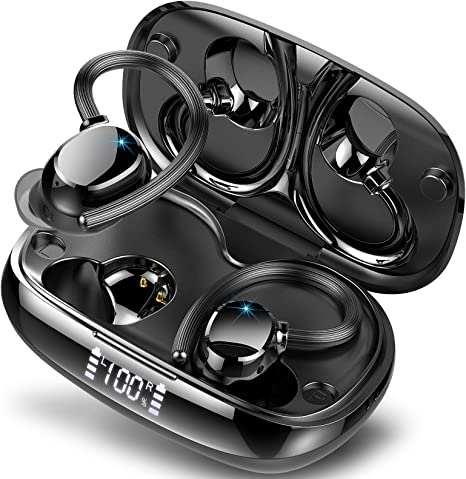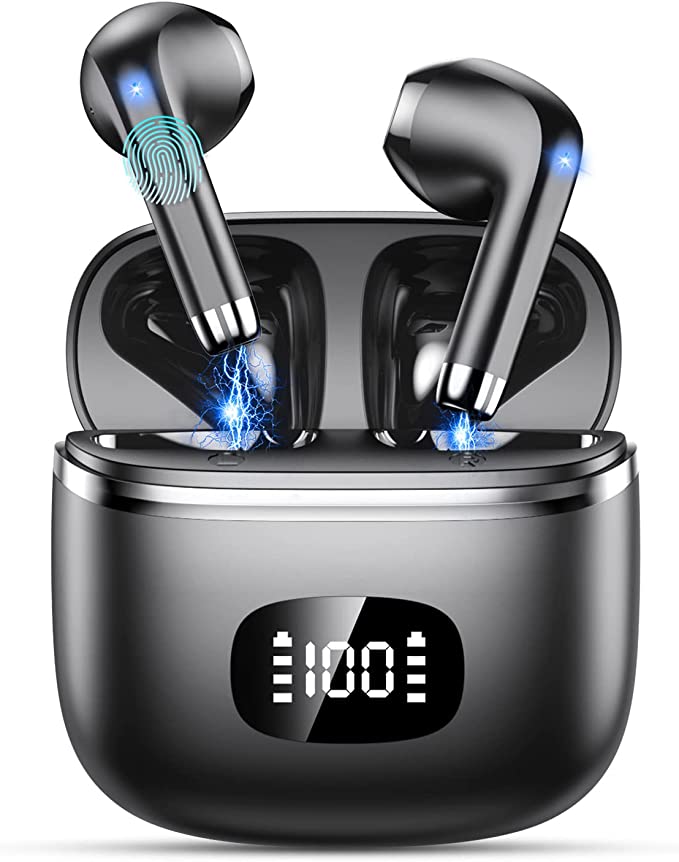The Science of Sound: Unpacking the HXW PD708 Sample Pad's Engineering Marvels
Update on July 14, 2025, 4:30 a.m.
In the ever-evolving symphony of modern music, the percussive backbone has undergone a profound transformation, moving from purely acoustic vibrations to the intricate world of digital data. This shift was catalyzed by the advent of electronic drums and, crucially, sample pads—instruments that began as niche tools and blossomed into indispensable components of studios and stages worldwide. They allowed musicians to transcend the limitations of physical instruments, offering an orchestra of sounds at their fingertips, from a subtle hi-hat to an entire symphonic explosion. At the forefront of this digital revolution, devices like the HXW PD708 Sample Pad stand as prime examples of how advanced engineering principles converge to empower unprecedented musical expression. More than just a collection of buttons, the PD708 represents a sophisticated blend of sensor technology, digital signal processing, and communication protocols, transforming the very act of drumming into a precise, digital art form.

The Science of Touch: From Physical Strike to Digital Symphony
The immediate interaction with a sample pad begins with its playing surface, and the fidelity of this interaction dictates the expressiveness of the performance. The HXW PD708 features nine velocity-sensitive pads, each acting as a sophisticated transducer. At their core, these pads often employ piezoelectric sensors or force-sensing resistors (FSRs). A piezoelectric sensor generates an electrical voltage in response to mechanical stress (the strike), while an FSR changes its electrical resistance proportionally to the applied force. This electrical signal is then converted into digital data, allowing the pad to discern not just if a pad was hit, but how hard. This is fundamental for capturing the dynamics of a performance, enabling subtle nuances from a gentle tap to a powerful whack.
A persistent challenge in multi-pad designs is crosstalk, where the vibration from striking one pad inadvertently triggers an adjacent one. This issue, akin to acoustic resonance, requires clever engineering solutions. The PD708 incorporates advanced trigger technology with increased crosstalk protection. This is achieved through sophisticated signal processing algorithms that analyze the timing and amplitude of signals from multiple sensors, effectively “filtering out” false positives. Furthermore, the concept of 5 timbre layers significantly enhances realism. Imagine a physical drum: striking it softly, medium, or hard produces not just different volumes but also distinct tonal qualities. Digitally, this is replicated by storing multiple samples for the same sound, each recorded at a different velocity. The PD708 intelligently selects the appropriate timbre layer based on the velocity of your strike, creating a fluid and natural sonic response that truly mimics acoustic instruments.

Crafting Sonic Landscapes: The Digital Audio Engine
Beyond the physical interaction, the true magic of a sample pad lies in its ability to manage and manipulate vast libraries of sounds. The PD708’s internal architecture is built around a robust digital audio engine, capable of handling over 1000 built-in percussion sounds and user-loaded samples. The cornerstone of this capability is its support for 48kHz/16-bit stereo audio, specifications crucial for high-fidelity sound reproduction.
The 48kHz sample rate refers to the number of snapshots (samples) taken of an analog sound wave per second during the analog-to-digital conversion process. According to the Nyquist-Shannon sampling theorem, a sample rate must be at least twice the highest frequency present in the original analog signal to accurately reconstruct it. Since humans can typically hear up to 20kHz, 48kHz provides ample headroom for capturing the full spectrum of musical sound. The 16-bit depth, on the other hand, determines the dynamic range of the audio—the difference between the loudest and quietest sounds that can be represented. A 16-bit system offers 65,536 distinct amplitude levels ($2^{16}$), providing a clean signal with minimal quantization noise, which is crucial for professional-sounding audio.
This high-resolution audio is stored within the PD708’s substantial 32 GB internal memory. This generous capacity is critical for housing not just the extensive built-in library but also a large collection of user samples and even recorded tracks. Efficient data management and potentially lossless compression techniques are employed to ensure quick access and optimal use of this vast storage, allowing musicians to carry an entire “digital drum shed” with them.
Unleashed Creativity: Wireless Sampling and Real-time Sound Sculpting
Modern music production thrives on immediacy and flexibility, and the HXW PD708 embraces this with its innovative Wireless Bluetooth Sampling capability, powered by Bluetooth 5.0 (BT5.0). Bluetooth, a wireless technology standard for exchanging data over short distances, has seen significant advancements. Bluetooth 5.0 offers increased speed (up to 2 Mbps), greater range, and improved stability compared to its predecessors. For audio applications, this translates to more reliable data transfer and, critically, reduced latency—the delay between an action (like playing a sound on your phone) and its corresponding output on the sample pad. This allows for seamless, real-time WAV recording as audio samples directly into the device from a smartphone, tablet, or computer, eliminating the need for cumbersome cables and simplifying the creative workflow. This ‘grab-and-go’ approach to sampling empowers spontaneous creation and experimentation.
Once a sound is captured or selected, the PD708 further empowers sonic exploration with its 4 built-in effect processors offering 24 distinct effects. At the heart of these capabilities lies Digital Signal Processing (DSP). DSP chips are specialized microprocessors designed to perform high-speed mathematical operations on digital audio data. When you apply an effect like reverb, the DSP chip executes complex algorithms that simulate the reflections of sound in a physical space. Similarly, effects like delay (creating echoes) or compression (managing dynamic range) are also precisely calculated and applied by these processors in real-time. This allows musicians to sculpt and refine their sounds directly on the device, transforming raw samples into polished, production-ready elements without the need for external software or hardware.

The Nexus of Sound: Comprehensive Connectivity and Modularity
A truly versatile musical instrument must integrate seamlessly into diverse creative ecosystems. The HXW PD708 serves as a central nexus through its comprehensive array of input and output ports. Foremost among these are its 5-pin MIDI IN/OUT ports. MIDI (Musical Instrument Digital Interface), established in the early 1980s, is not an audio signal but a digital communication protocol—a “language” that allows electronic musical instruments and computers to communicate with each other. This enables the PD708 to send performance data (like which pad was hit and how hard) to a Digital Audio Workstation (DAW) or an external synthesizer, or to receive timing and program change commands from other devices, making it an integral part of any studio or live setup.
For direct computer interaction, a USB-B port facilitates data transfer, allowing the PD708 to function as a controller for software instruments (VSTs) and recording within DAWs. On the analog side, 1/4-inch stereo outputs (Left, Right) provide professional connections to mixers, amplifiers, or audio interfaces, ensuring high-quality signal paths. A dedicated 1/4-inch HEADPHONE output is indispensable for private practice or stage monitoring, while an 1/8-inch stereo AUX input allows musicians to plug in external audio players and jam along.
The PD708’s design also champions modularity and expansion. With 4 external dual-channel inputs and 2 PEDAL inputs, players can easily connect additional pads, drum triggers, or footswitches. This transforms the compact unit into a more expansive performance rig, offering greater physical control and responsiveness, and allowing the instrument to adapt and grow with a musician’s evolving needs and creative demands.
Beyond the Beat: Visuals and Seamless Performance
In the captivating realm of live music, the visual experience is often as crucial as the auditory. The HXW PD708 injects a dynamic visual element into performances with its nine high-visibility, horizontal LED lights. These lights offer multi-color customization and illuminate in sync with every pad strike, creating a striking visual rhythm that enhances stage presence, especially in dimly lit venues. The human eye is drawn to light and movement, and these LEDs serve as more than just an aesthetic flourish; they provide immediate, intuitive visual feedback to the performer, aiding accuracy and engagement during energetic sets.
A often-overlooked technical challenge in live digital performance is the transition between different sound kits or patches. Abrupt audio dropouts or glitches during kit changes can severely disrupt the flow of a song. The PD708 addresses this with a critical engineering feature: its ability to smoothly swap to a new kit without cutting off the sound of the existing kit. This is achieved through sophisticated audio buffering and processing, where the previous kit’s sounds are allowed to naturally decay or finish their playback even as the new kit is loaded and prepared. This seamless transition ensures a professional, uninterrupted sonic experience for both the performer and the audience, underscoring the thoughtful design put into making the PD708 a reliable instrument for demanding live environments.
The HXW PD708: A Laboratory for Sonic Innovation
The HXW PD708 Sample Pad stands as a compelling testament to the synergistic relationship between artistic vision and scientific innovation. It is not merely a tool for playing pre-recorded sounds but a compact, powerful laboratory for sonic exploration. From the intricate physics of its velocity-sensitive pads and advanced trigger algorithms, to the precise digital mathematics underpinning its audio engine and effects processing, every aspect of the PD708 is a product of sophisticated engineering. Its embrace of wireless technology via Bluetooth 5.0 and its comprehensive suite of connectivity options solidify its position as a highly adaptable instrument in the contemporary musical landscape. The PD708 empowers musicians to experiment with new sounds, integrate diverse technologies, and deliver captivating performances, bridging the gap between physical interaction and the boundless possibilities of the digital realm. It invites users to not just make music, but to understand and master the intricate science that brings their sounds to life.








